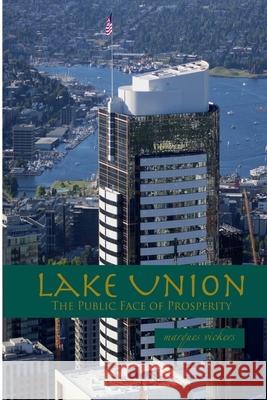Lake Union: The Public Face of Prosperity: Seattle Downtown Vertical Architecture » książka
Lake Union: The Public Face of Prosperity: Seattle Downtown Vertical Architecture
ISBN-13: 9781536876505 / Angielski / Miękka / 2016 / 154 str.
Lake Union: The Public Face of Prosperity: Seattle Downtown Vertical Architecture
ISBN-13: 9781536876505 / Angielski / Miękka / 2016 / 154 str.
(netto: 76,99 VAT: 5%)
Najniższa cena z 30 dni: 80,18
ok. 16-18 dni roboczych
Bez gwarancji dostawy przed świętami
Darmowa dostawa!
Photographer Marques Vickers has captured over 160 stunning images from thirty-five commercial development projects that shape the nucleus of Seattle's downtown Lake Union district. "Lake Union: The Public Face of Prosperity" is the initial volume in the Vertical Seattle series intended to document the city's dynamic skyline growth. The heightening of the downtown Seattle skyline mirrors the prosperity and expansion of the business core. This change in complexion is most evident along the shoreline of Lake Union, a freshwater passage contained entirely within Seattle's city limits. Lake Union was originally formed by the melting of the Vashon Glacier waters and officially named by Seattle pioneer Thomas Mercer in 1854. Mercer correctly forecasted that with effective damming and canals, the eventual union of Lake Washington and Puget Sound could be completed. The Duwamish and Chinook native tribes called the body small waters. The Boeing Corporation initiated production facilities in 1916. The shoreline for decades remained principally shipyards, wharfs, sawmills and diminutive restaurant and retail outlets. The high technology industry has completely altered the commercials emphasis. The chronic Seattle housing shortage has accentuated a similar boom for elevated residential properties. Staggering glass monoliths have continued to proliferate amongst the welcoming neighborhoods of South Lake Union and periphery sections on the eastern and western shores. Proponents of contemporary progress have welcomed the expansion of mixed-use commercial office, retail, hotel accommodations and permanent living spaces. Assuming that the ambitious pace continues, South Lake Union will consolidate its gateway status towards the historic downtown core. In the process, the construction is eliminating generations of low-rise buildings and structural eyesores of modest or no local architectural significance. The rapid progression has prompted criticism based on the accompanying traffic congestion, skyrocketing leases and parking scarcity. Light rail programs may alleviate some of these concerns. Many critics have cited that the city of Seattle was never intended nor proactively planned to become a major urban center. The infrastructure to accommodate its growth is being installed on a catch-up basis. The argument may be valid, but the city planners of Seattle appear fully committed towards growth and elevated expansion. Activist demands for restraint and moderation are generally muffled amidst the momentum of increasing space demands, public hearings, zoning variances, demolition and construction. The nature of aggressive growth does not historically pause. The Lake Union shoreline has become forever changed. Most of the completed high-rise buildings featured in this edition are less than ten years old. Numerous more are anticipated and currently in diverse stages of planning and completion. This edition's images visually portray the changes in the present tense. Clearly, however, downtown Seattle's future is oriented towards an increasing vertical expansion.
Zawartość książki może nie spełniać oczekiwań – reklamacje nie obejmują treści, która mogła nie być redakcyjnie ani merytorycznie opracowana.











